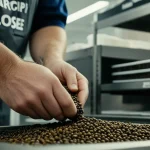Foundations of English Cuisine and Its Global Perception
English cuisine origins are deeply rooted in both historical tradition and regional resources. Traditional British food is characterised by hearty, straightforward dishes such as roast meats, pies, and puddings, often emphasising seasonal and local ingredients. The evolution of these recipes reflects centuries of agricultural practices and social changes, from medieval feasts to Victorian innovations.
The defining characteristics of English cuisine often revolve around simplicity and comfort, with an emphasis on roasting, baking, and boiling techniques. Iconic dishes like the Sunday roast or fish and chips showcase this pragmatic yet satisfying style. Over time, these traditional foods have gained a distinctive identity, balancing rustic origins with modern tastes.
Globally, British food’s reputation has oscillated from understated to influential. While historically, English cuisine was sometimes stereotyped as bland, its global culinary influence is undeniable today. British culinary exports such as afternoon tea or the full English breakfast highlight the adaptability and appeal of English food culture worldwide. This evolving perception demonstrates how traditional British food retains its cultural significance while inspiring international interest and reinterpretation.
Historical Impact of English Cuisine Worldwide
Understanding the British Empire’s culinary legacy
The British Empire’s food influence was pivotal in spreading English cuisine globally. Through colonial culinary exchange, traditional British food—such as pies, puddings, and preserved meats—traversed continents, adapting to local tastes but maintaining core elements. This cultural diffusion was reinforced by trade networks distributing key ingredients like tea, sugar, and spices, which helped embed English recipes in diverse culinary landscapes.
One clear example of British Empire food influence is the adoption of afternoon tea traditions in countries like India and Australia, where local variations emerged. Similarly, the iconic Sunday roast inspired meat-centered meals across Commonwealth nations, showcasing how English cuisine origins left an enduring imprint.
Colonial culinary exchange also facilitated ingredient hybridization: English recipes often incorporated native produce, enriching their flavor profiles and creating new culinary forms. This legacy of recipe and ingredient spread underlines English cuisine’s lasting global role, blending traditional British food with the world’s diverse food cultures. The historical context of these exchanges remains vital to understanding how English cuisine evolved and continues to influence eating habits beyond the UK today.
Modern Examples of English Dishes Influencing Global Food Trends
English cuisine origins shine through popular global English dishes such as the full English breakfast, savory pies, and afternoon tea. These signature British recipes have transcended their traditional settings to become culinary staples worldwide. For example, the full English breakfast finds variations in many countries, showcasing eggs, sausages, and baked beans adapted to local tastes but maintaining the original hearty essence.
English food exports like pies and tea enjoy international acclaim, often reinvented abroad. Fusion cuisine frequently incorporates classic British elements—such as using traditional pie crusts with exotic fillings—demonstrating how English recipes evolve to reflect diverse palates.
English pub culture also influences modern dining trends globally. Gastropubs combining traditional British cooking techniques with contemporary flair create immersive eating experiences. This blend of casual atmosphere and quality food resonates internationally, driving interest in British culinary traditions.
Overall, these examples reveal the global culinary influence and enduring appeal of traditional British food, proving that English cuisine origins continue to inform and inspire innovative food trends worldwide.
English Cooking Techniques and Ingredients in the Global Pantry
English culinary techniques like roasting, baking, and preservation have left a significant mark on global gastronomy. Roasting, a cornerstone of English cuisine origins, is prized for enhancing natural flavors and textures, inspiring methods used in kitchens worldwide. British baking, from pies to breads, is another key technique successfully exported and integrated into global culinary practices.
Preservation methods such as pickling and curing, once vital for traditional British food survival, now enrich modern gastronomic repertoires. These techniques enable the creation of complex flavors and long-lasting ingredients, inspiring chefs globally to innovate.
British ingredients like malt vinegar, English mustard, and dried fruits play essential roles beyond the UK, influencing diverse recipes and product formulations. For example, malt vinegar has become a classic accompaniment not only to fish and chips but also to international dishes needing acidity and depth.
The incorporation of these ingredients and techniques into global culinary arts underscores English cuisine origins as foundational and adaptable. Their continued use highlights how British culinary influence extends beyond dishes, shaping kitchen techniques and ingredient choices in contemporary food culture worldwide.
Adaptation and Globalization of English Cuisine
English cuisine origins have proven remarkably flexible, enabling the globalization of food through both preservation and innovation. English recipes worldwide often undergo cultural adaptation to suit local tastes, dietary preferences, and ingredient availability. For instance, the traditional full English breakfast might include regional sausages or substitute beans with spicy variations in different countries, demonstrating practical yet respectful modifications.
Immigration and international chefs play a key role in this evolution by introducing fresh perspectives while honoring traditional British food foundations. Their culinary creativity has led to fusion dishes that blend English elements with global flavors. Examples include pies featuring curried fillings or afternoon tea menus incorporating Asian teas and sweets.
This continuous adaptation sustains the relevance of English cuisine origins, fostering its presence in global gastronomy. It also invites a dialogue between heritage and innovation, enhancing both authenticity and accessibility. English food’s ability to evolve across cultures underlines its strength and appeal in a rapidly globalizing world, making it a vibrant participant in contemporary international food culture.
English Cuisine’s Role in Shaping Contemporary Food Movements
English cuisine origins increasingly contribute to modern food trends, especially in sustainable cuisine and culinary innovation. Traditional British food emphasizes local, seasonal ingredients—an approach that aligns closely with the farm-to-table movement. This connection encourages chefs and consumers to prioritize fresh, regionally sourced produce, reducing environmental impact and supporting local farmers.
A defining feature of English cuisine’s influence on sustainable eating is its focus on whole-animal use and minimal waste, seen in classic dishes that utilise less common cuts of meat and seasonal vegetables. This ethic supports resourcefulness and environmental responsibility, inspiring contemporary chefs worldwide to adopt similar practices.
Moreover, British culinary innovation is evident in its integration within modern gastronomy, blending tradition with cutting-edge techniques. English cuisine’s adaptability fosters creative reinterpretations while preserving its core identity.
Educational programs and food media globally highlight British food’s evolving role, promoting sustainability and innovation. By championing these values, English cuisine origins continue shaping present and future culinary landscapes, encouraging a return to thoughtful, responsible cooking dedicated to taste, culture, and the environment.








